When you hear the name Napoleon Bonaparte, what comes to mind?
French guy. Funny hat. Josephine. Short. Hand-in-coat.
Napoleon is one of the most iconic figures in the world, right up there with Ronald McDonald and that annoying 1970s Smile face. He was a personality so large, he’s known by one name, like Cher and Madonna (proof you’ve really hit the big time).
Yet despite his continued superstar status almost 200 years after his death, nearly everything we associate with him is wrong.
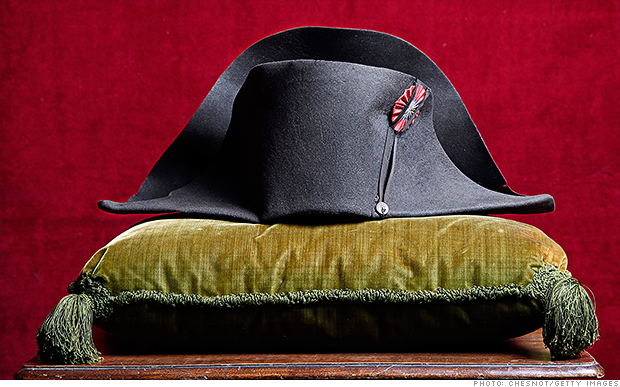 Ok, he did wear the funny hat. (It sold for $2.4 million at auction last November.) But he wasn’t French; he was Corsican and named Napoleone di Buonaparte at birth; he changed it in his 20s to sound French. Yes, Josephine was his great love; but when he died he was married to Marie Louise of Austria, Duchess of Parma. And no, he wasn’t short; he stood just shy of 5’7’’, average height for the time. (There are two reasons for this. The French measurement system used in those days was smaller than the British system; hence the discrepancy. Plus, Napoleon was always surrounded by his Imperial Guard, who were gigantic, making him look like a shrimp.)
Ok, he did wear the funny hat. (It sold for $2.4 million at auction last November.) But he wasn’t French; he was Corsican and named Napoleone di Buonaparte at birth; he changed it in his 20s to sound French. Yes, Josephine was his great love; but when he died he was married to Marie Louise of Austria, Duchess of Parma. And no, he wasn’t short; he stood just shy of 5’7’’, average height for the time. (There are two reasons for this. The French measurement system used in those days was smaller than the British system; hence the discrepancy. Plus, Napoleon was always surrounded by his Imperial Guard, who were gigantic, making him look like a shrimp.)
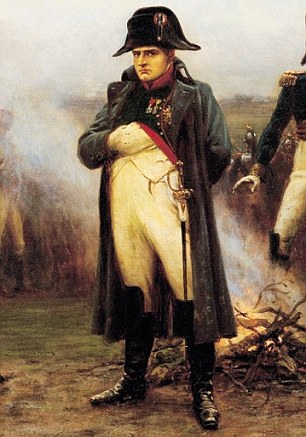 Then there was the famous pose. Ask any school child to imitate Napoleon, and the kid will stand tall and thrust a hand into his shirt. It’s cemented to his identity as strongly as Marilyn Monroe’s skirt blown upward by the subway grate draft, or Washington standing in the boat as it crossed the Delaware River.
Then there was the famous pose. Ask any school child to imitate Napoleon, and the kid will stand tall and thrust a hand into his shirt. It’s cemented to his identity as strongly as Marilyn Monroe’s skirt blown upward by the subway grate draft, or Washington standing in the boat as it crossed the Delaware River.
A flood of reasons has been offered over the years to explain it. He had stomach or breast cancer; he was hiding a deformed hand; he was scratching an itch; he was winding his watch; he knew the heartbreak of psoriasis. One theory even claimed he wore a ring given to him by a secret lover, which he hid to keep Josephine from getting jealous. All very interesting … and all untrue.
Ready for the shocker? The French Emperor didn’t go around with his hand in his coat in real life. Honest!
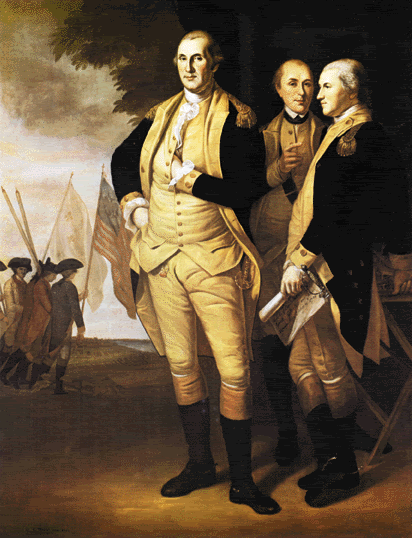 That’s right; the pose we associate exclusively with Napoleon was commonly used in portraits of the famous and powerful long before he was even born. In fact, hand-in-coat (or vest or waistcoat) appeared in English and Colonial American works in the 1700s so much, some artists were accused of not knowing how to paint hands. It was used so often, it became a cliché, and fell out of style well before the end of the 18th Century.
That’s right; the pose we associate exclusively with Napoleon was commonly used in portraits of the famous and powerful long before he was even born. In fact, hand-in-coat (or vest or waistcoat) appeared in English and Colonial American works in the 1700s so much, some artists were accused of not knowing how to paint hands. It was used so often, it became a cliché, and fell out of style well before the end of the 18th Century.
 What made the look popular? Believe it or not, it was considered a sign of good breeding. In 1738, Francois Nivelon, the 18th Century’s Emily Post for all things etiquette, wrote in A Book of Genteel Behavior that the hand-inside-coat pose signified “manly boldness tempered with modesty.” It expressed a firm leader who was also calm, cool and collected. (Can you imagine a modern President of the United States walking up to the podium in the White House briefing room, thrusting one hand into his jacket and beginning a televised news conference with, “Yo, dogs! Let’s keep it real.” I can’t either. Well … maybe Donald Trump.)
What made the look popular? Believe it or not, it was considered a sign of good breeding. In 1738, Francois Nivelon, the 18th Century’s Emily Post for all things etiquette, wrote in A Book of Genteel Behavior that the hand-inside-coat pose signified “manly boldness tempered with modesty.” It expressed a firm leader who was also calm, cool and collected. (Can you imagine a modern President of the United States walking up to the podium in the White House briefing room, thrusting one hand into his jacket and beginning a televised news conference with, “Yo, dogs! Let’s keep it real.” I can’t either. Well … maybe Donald Trump.)
So, how did the pose come to be associated with Napoleon?
 Blame it on an artist named Jacques-Louis David. A Scottish nobleman commissioned him to paint a portrait of the French leader. David greatly admired Napoleon and had previously painted him from life. By the time the commission came in 1812, Napoleon’s popularity was declining. So David decided to give him a boost by using the dormant hand-in-coat pose in “Napoleon in His Study” (the famous painting at the top of the page). You got it right, he revived a passe English artistic technique to generate positive p.r. for France’s Emperor.
Blame it on an artist named Jacques-Louis David. A Scottish nobleman commissioned him to paint a portrait of the French leader. David greatly admired Napoleon and had previously painted him from life. By the time the commission came in 1812, Napoleon’s popularity was declining. So David decided to give him a boost by using the dormant hand-in-coat pose in “Napoleon in His Study” (the famous painting at the top of the page). You got it right, he revived a passe English artistic technique to generate positive p.r. for France’s Emperor.
Napoleon didn’t sit for the portrait, so David painted him from memory. Critics didn’t care for the final product, but the subject sure did. Napoleon told the artist after seeing the portrait, “You have understood me, my dear David.”
And Napoleon understood the importance of the revitalized pose, too. He used it when he sat for many following portraits, and so later artists kept painting him with his hand in his coat.

 Which breathed new life into the practice just as photographic portraiture was coming into its own. Of the countless presidents, poets, inventors and Civil War generals who sat before Mathew (he only used one “t” in his name) Brady’s camera, a good many of them used the Napoleonic posture.
Which breathed new life into the practice just as photographic portraiture was coming into its own. Of the countless presidents, poets, inventors and Civil War generals who sat before Mathew (he only used one “t” in his name) Brady’s camera, a good many of them used the Napoleonic posture.
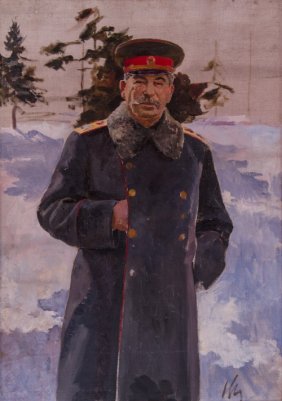 The practice continued well into the 20th Century, with one of the most vile dictators of all time, Josef Stalin, even using it. (Although in his case, nobody ever accused him of “manly boldness tempered with modesty.” Bloodthirsty maniacal paranoia, yes; modesty, never.) It seems the Monster of the Soviet Union was the last prominent person to practice it.
The practice continued well into the 20th Century, with one of the most vile dictators of all time, Josef Stalin, even using it. (Although in his case, nobody ever accused him of “manly boldness tempered with modesty.” Bloodthirsty maniacal paranoia, yes; modesty, never.) It seems the Monster of the Soviet Union was the last prominent person to practice it.
Yet somehow over the decades, the oils that predated Napoleon and the photos that followed were all forgotten. Hand-in-coat came to mean one man, and one man only: Napoleon Bonaparte. And today, it is almost impossible to imagine him any other way.
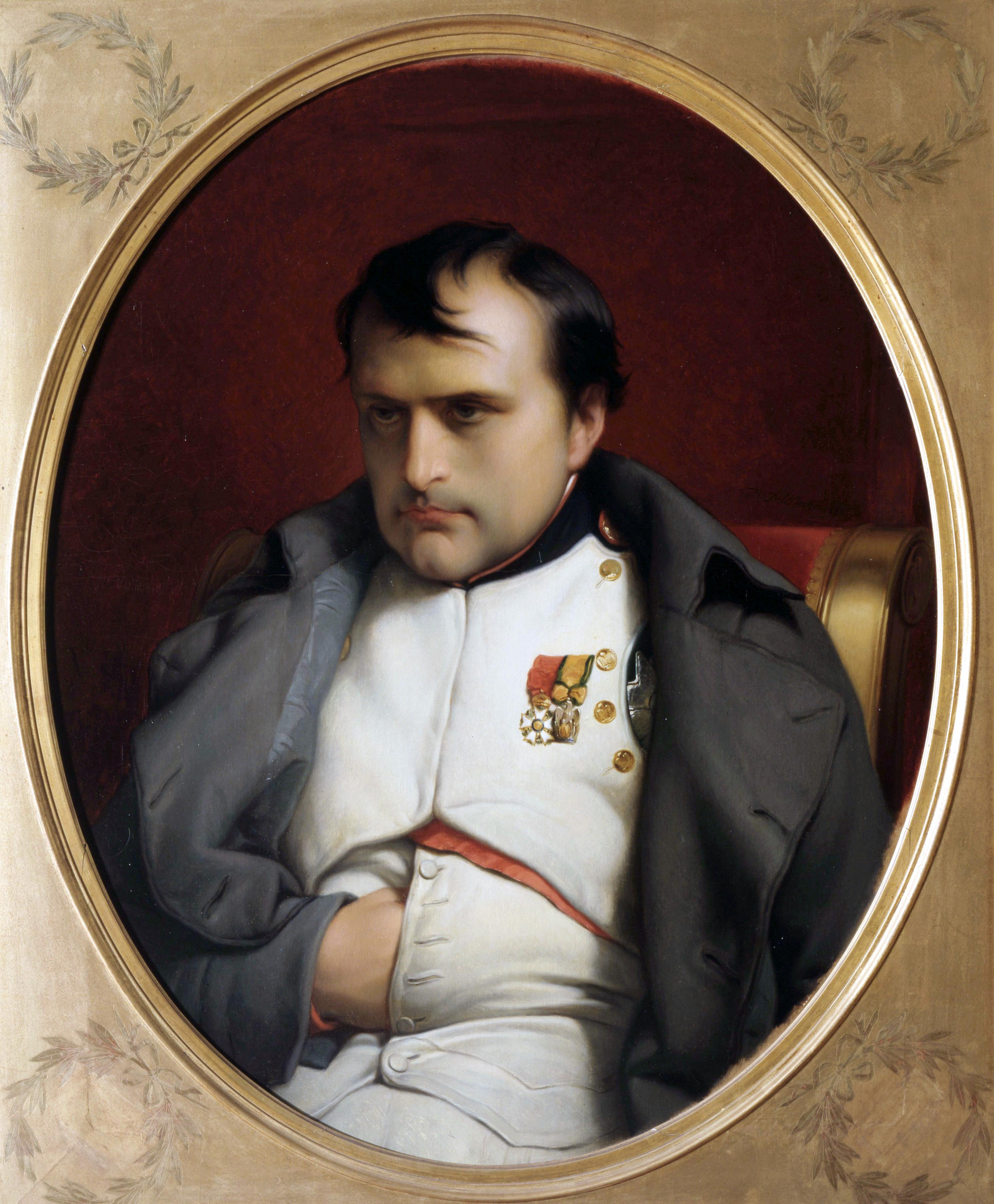 Don’t bother trying to understand why. Some answers in life are never known. Just shrug your shoulders and accept it the way the French do. “C’est la vie.”
Don’t bother trying to understand why. Some answers in life are never known. Just shrug your shoulders and accept it the way the French do. “C’est la vie.”
Did you find this enjoyable or helpful? Please continue to join me each week, and I invite you to read Tell it Like Tupper and share your review!
Curious about Tell It Like Tupper? Here’s a chance to see for yourself. Take a sneak peek at a couple chapters in this free downloadable excerpt.


Mark
I am reading “Napoleon: A Life” by Andrew Roberts. Roberts states that Napoleon posed with his hand in his coat to mimic Julius Caesar, a hero of his, and in general it is the way Romans held their Togas.
Interesting post.